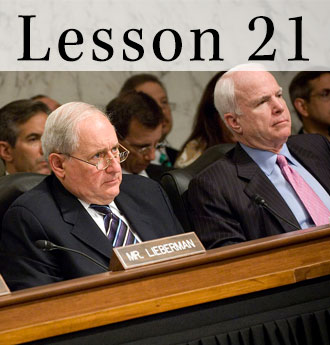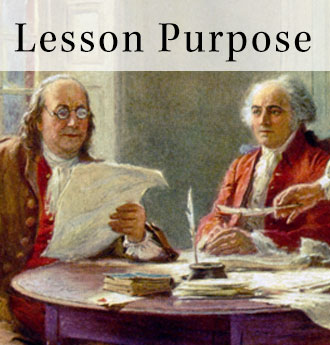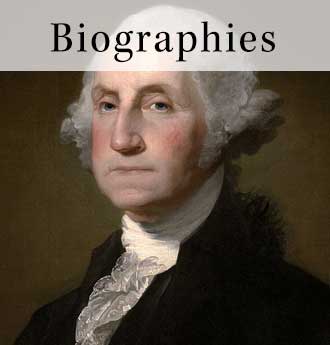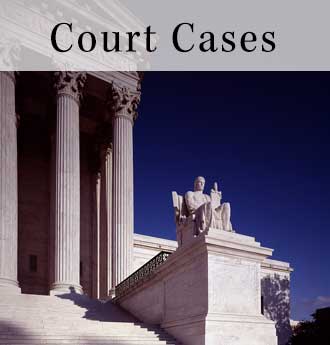Lesson 21: What is the Role of Congress in American Constitutional Democracy?
How does Congress differ from the British Parliament? (Section 1) (Video)
Similarities and differences between Congress and the British Parliament; Madison's concept of the role of Congress; balance of power between Congress and other branches; Congress to represent all of the people while the British Parliament represents people by class; Senate representation by state; power and role of the House of Lords; powers of the Senate compared with the House of Lords; authority of the House of Commons compared with Congress; fusion of legislative, executive, and judicial powers in Parliament; selection of the executive in Great Britain.
Student Questions: Unit 4, Lesson 21, Sections 1-4 (pdf download)
What are the differences between the executive and legislative functions in the British parliamentary system and the American system? (Section 2) (Video)
Executive and legislative functions in British system compared with American system; terms of representatives; rationale for terms; fusion of legislative and executive power in Parliament; role of Prime Minister; accountability in British system; rationale for Framers' rejection of parliamentary system; gridlock and deadlock in American system; efficiency of parliamentary systems; reasons for less-efficient, slower process in American system; issue of responsiveness of both systems to the will of the people; comparing terms of representatives; problem of short- and long-term views of representatives.
What are the advantages and disadvantages of the American system of federalism and the unitary system in Great Britain? (Section 3) (Video)
Advantages and disadvantages of American federal system and British unitary system; Framers' rationale for federal system; Parliament's delegation of powers in unitary system; allocation of powers in American and British systems; opportunity for civic engagement in American system compared with British system.
What are the constitutional powers of Congress? How does it represent the interests of the people and serve its constituents? (Section 4) (Video)
Constitutional limits on the powers of Congress; Constitution allocates more power to Congress than other branches; limitation on Congress in Article I, Sections 9 and 10; First Amendment limitations on Congress; rationale for Necessary and Proper Clause; representation of the people and the states; delegate and trustee theories of representation; issues regarding implementation of the "one person, one vote" requirement; gerrymandering; Great Compromise; multimember districts versus winner-take-all districts; differences between representation in America and other advanced democracies; constituent relations.
Parliament (Video)
This short video explains the House of Commons and the House of Lords, as well as the role of the British monarch in Parliament.
Congress: Cram for the Exam (Video)
Two teachers help you review with them the essentials about Congress.
How It Happens: Legislative Districts (Video)
A video describing how legislative districts work.








